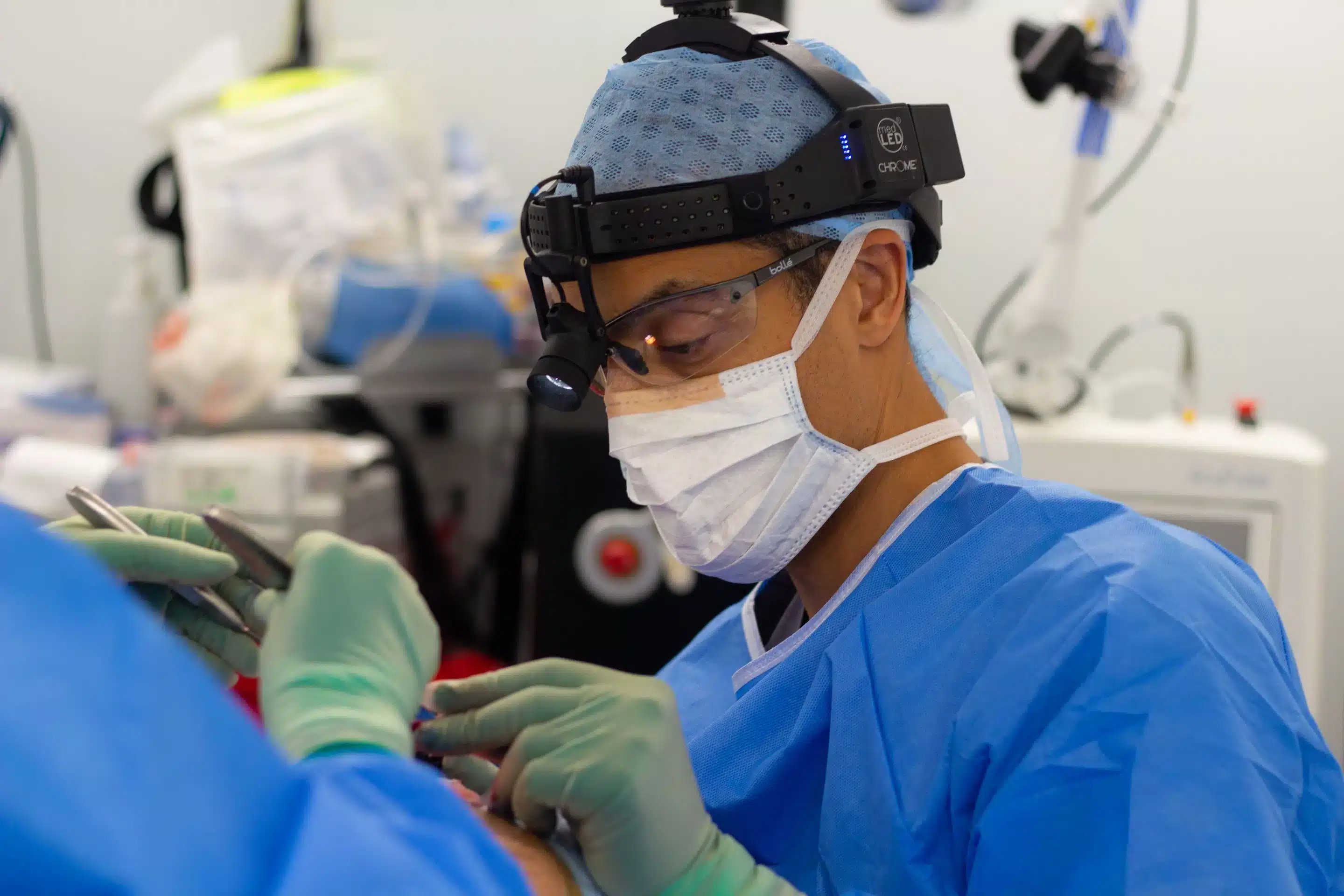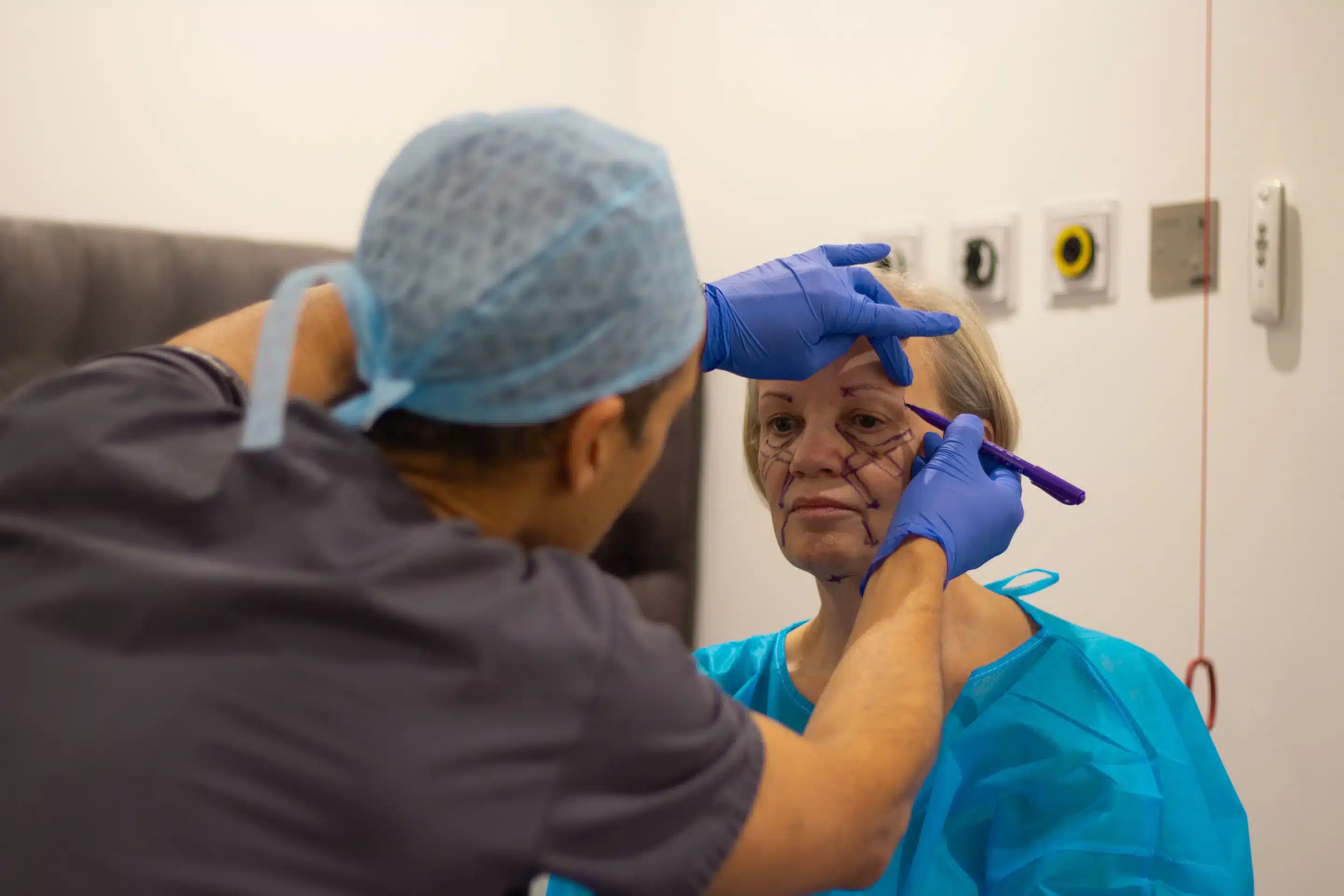Facial surgery can offer amazing results, restoring youth and enhancing appearance. However, many potential patients are concerned about the visibility of scars after procedures like facelifts and blepharoplasty.
It's natural to worry about whether the results will look natural or whether scarring will be noticeable. Fortunately, advanced surgical techniques today focus on minimising facial surgery scars, helping you achieve smoother, rejuvenated skin with minimal evidence of the procedure.
In this post, we'll dive into common patient concerns, why scars can be visible after surgery, and the techniques available to help minimise scarring. If you're considering surgery or have concerns about scarring from previous procedures, this guide will provide valuable insights.
Common Concerns About Scarring After Facial Surgery
Many patients worry about scars being visible after facial surgery, especially in highly noticeable areas like the eyelids, jawline, and neck. A primary concern is that scars will be permanent and unsightly, ruining the aesthetic outcome of the surgery. Additionally, some fear unnatural results where the face might look operated on rather than naturally refreshed.
Take, for example, a patient who had a previous blepharoplasty (eyelid surgery) and face and neck lift performed by another surgeon. This patient came to Dr. De Silva, expressing dissatisfaction with visible scars, asymmetry, and puffiness under her eyes. Despite undergoing multiple surgeries, the patient still appeared tired and aged, with visible scars and uneven skin texture. This highlights how important it is for surgical procedures to be carefully planned and executed to avoid visible scarring.
Why Can Scars Be Visible After Surgery?
Visible scars after surgery can result from several factors:
- Poor Surgical Technique or Incision Placement: If incisions are not placed in natural creases or hairlines, scars are more likely to catch the light and become visible.
- Healing Process: Different skin types heal differently. Some individuals may be more prone to developing prominent scars due to their skin's natural response to healing.
- Individual Facial Anatomy: Every face is unique, and surgeries need to be tailored to the patient's facial structure. Failing to plan for individual features can result in unsatisfactory outcomes, including visible scars and asymmetry.
As Dr. De Silva notes, even subtle mistakes, such as placing an eyelid surgery scar too high or removing too much skin, can lead to issues like puffiness, unevenness, or eyelid retraction, which are more noticeable.
How to Minimise Scarring After Surgery
The good news is that with the right techniques and an experienced surgeon, scars can be hidden or significantly minimised. Below are some ways that modern surgery can help reduce the visibility of scars:
1. Strategic Placement of Incisions
A key to minimising scarring is placing incisions in natural facial creases or hairlines. For example, Dr. De Silva advises placing eyelid surgery scars lower within the natural crease of the eyelid, making them nearly invisible when the eyes are open. Similarly, in facelift surgeries, the goal is to position the incisions along the natural contours of the ears, making them much harder to spot.
2. Deep Plane Facelift Technique
A deep plane facelift is an advanced method that not only lifts the skin but also addresses the underlying facial structures, such as ligaments and fat. This technique allows for more natural results and faster recovery times, as it avoids some of the common issues associated with traditional facelifts, such as visible scars or pulled skin.
3. Fat Transfer and Laser Resurfacing
Fat transfer and laser resurfacing are excellent complementary techniques for improving the skin's texture and reducing visible scars. Fat transfer involves taking small amounts of fat from other parts of the body (such as the abdomen) and injecting it into areas of the face that have lost volume, such as the cheeks or under the eyes. This can smooth out wrinkles and lines, creating a more youthful appearance while helping the skin heal.
Laser resurfacing helps to reduce the appearance of scars by encouraging the skin to renew itself. By stimulating collagen production, it can improve the texture and tone of the skin, leading to smoother and more even results.
4. Revision Surgery
For patients who are unhappy with previous facial surgery results, revision surgery can be an excellent option. In revision cases, the surgeon carefully plans and executes new incisions, corrects any asymmetry, and addresses issues like puffiness or skin texture. As Dr. De Silva points out, revision surgeries focus on precision and artistry, blending surgical skill to ensure natural-looking results without visible scars.
Natural-Looking Results: The Key to Confidence
The ultimate goal of any facial surgery is to achieve natural-looking results. Dr. De Silva emphasises that a facelift or blepharoplasty should leave patients looking refreshed, not operated on. By blending artistry with surgical technique, skilled surgeons can help patients achieve rejuvenated, youthful-looking faces while minimising scarring.
For example, in the case of the patient mentioned earlier, Dr. De Silva's revision surgery successfully repositioned the eyelid scars into the natural crease and reduced the puffiness under the eyes. The result was a much smoother, more symmetrical appearance that enhanced her natural beauty without leaving visible scars.
Key Takeaways: How to Minimise Scarring After Surgery
When it comes to facial surgery, scarring is a concern for many potential patients. However, with advanced techniques and careful planning, visible scars can be minimised or even concealed completely. Here are the key takeaways for anyone considering facial surgery:
- Not all surgeries result in visible scarring, especially when advanced techniques like deep plane facelifts and fat transfer are used.
- Scar visibility depends on the surgeon's skill, incision placement, and post-operative care. Choosing an experienced surgeon who specialises in facial surgery is crucial.
- Revision surgery can correct previous outcomes and significantly improve the appearance of scars.
- Precision and placement are key—whether it's repositioning an eyelid scar or ensuring facelift incisions are placed along the ear's natural curves.
Conclusion
To avoid visible scars and achieve the best possible results, it's essential to choose a surgeon with experience in facial surgery. As Dr. De Silva highlights, facial surgery is about millimetres, not centimetres, and requires an in-depth understanding of facial anatomy. A surgeon who specialises in facial procedures will be able to carefully plan and execute your surgery to ensure a smooth, natural result with minimal scarring.
If you're considering facelift or blepharoplasty surgery, or if you're unhappy with the results of a previous surgery, don't hesitate to reach out to a skilled, experienced surgeon to discuss your options. Minimising scarring and achieving natural results is possible when done right.
Are you considering a cosmetic facial procedure in London? Dr. De Silva's clinic in Central London, Harley Street, W1, is one of the best. Book a consultation here to discuss your options and get a personalised treatment plan.





